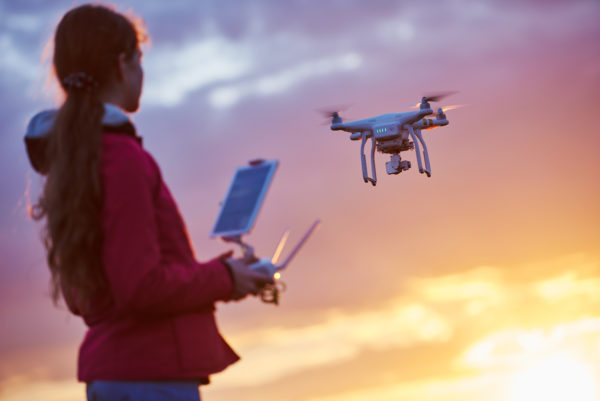Drones are often the subject of controversy, especially when it comes to debates around security and privacy. But do they have a place in education? One team of educators thinks so.
Though the word “drone” tends to have a negative connotation, drones have tremendous potential to help students learn science, technology, engineering, art, and math (STEAM) concepts.
Marisa Vickery, facilitator of learning and innovation at Walnut Elementary School in the Dripping Springs ISD, ran an after-school drone club that evolved into a full-fledged program after Dennis Baldwin, a software engineer and school parent who created an app called DroneBlocks. The app lets users program missions using block programming with the DJI Phantom 3, DJI Phantom 4, and Inspire 1 drones. Users drag and drop blocks onto the canvas to command their drone to follow a basic flight plan.
The next step was to link the drones to relevant content areas, and the team realized drones covered the entire STEAM spectrum.
“There are so many applications with drones and science,” said Lindsey Herring facilitator of learning and instruction at Dripping Springs Elementary School. “It’s fun, we have a great time flying them, but how can we apply them to the real world? Through STEAM.”
Lessons were written for grades 4-8, but are easily scaled up or down to be suitable for other grade levels. Students created safety rules and took turns presenting rules to one another.
“We have a passion for education and showing the good that can be done with drones,” Baldwin said. “Drones can be used for great things in real-world applications.”
STEAM applications include:
Science
- Exploring landscape, habitats and agriculture in the school community
- Discovering the possibility of flight and windspeed
- Assessing lands after natural disasters and storms
- Micro vs macro world (in relation to cells)
- Science projects, such as measuring battery use running the same mission with different weights attached to the drone
- Examining agriculture
Technology
- Programming and coding
- Integrating iPads, computers and drones for various purposes
- Blockly
- DroneBlocks
Engineering
- Land surveys
- Mapping and tracking building progress by taking the same photo of a construction or building site at different intervals, then overlaying the images to show progress
Art
- Aerial photographs
- Panographic image series
- Chalk drawings
- Dripping or splattering paint from the drone to analyze the patterns from different heights and at different speeds
Mathematics
- Angles
- Geometry
- Powers of 10
- Formulas
- A look at AI use in schools across the country - November 18, 2024
- 5 ways your classroom environment boosts student engagement - November 14, 2024
- Federal toolkit targets safe, ethical AI use in classrooms - November 11, 2024


